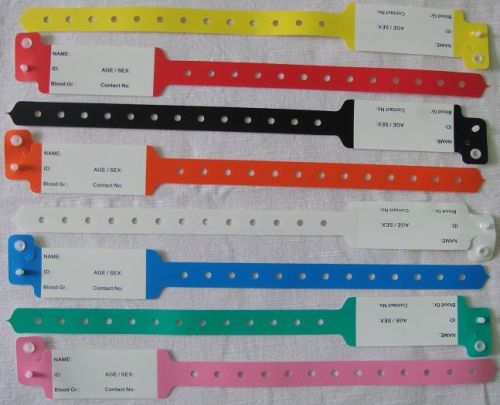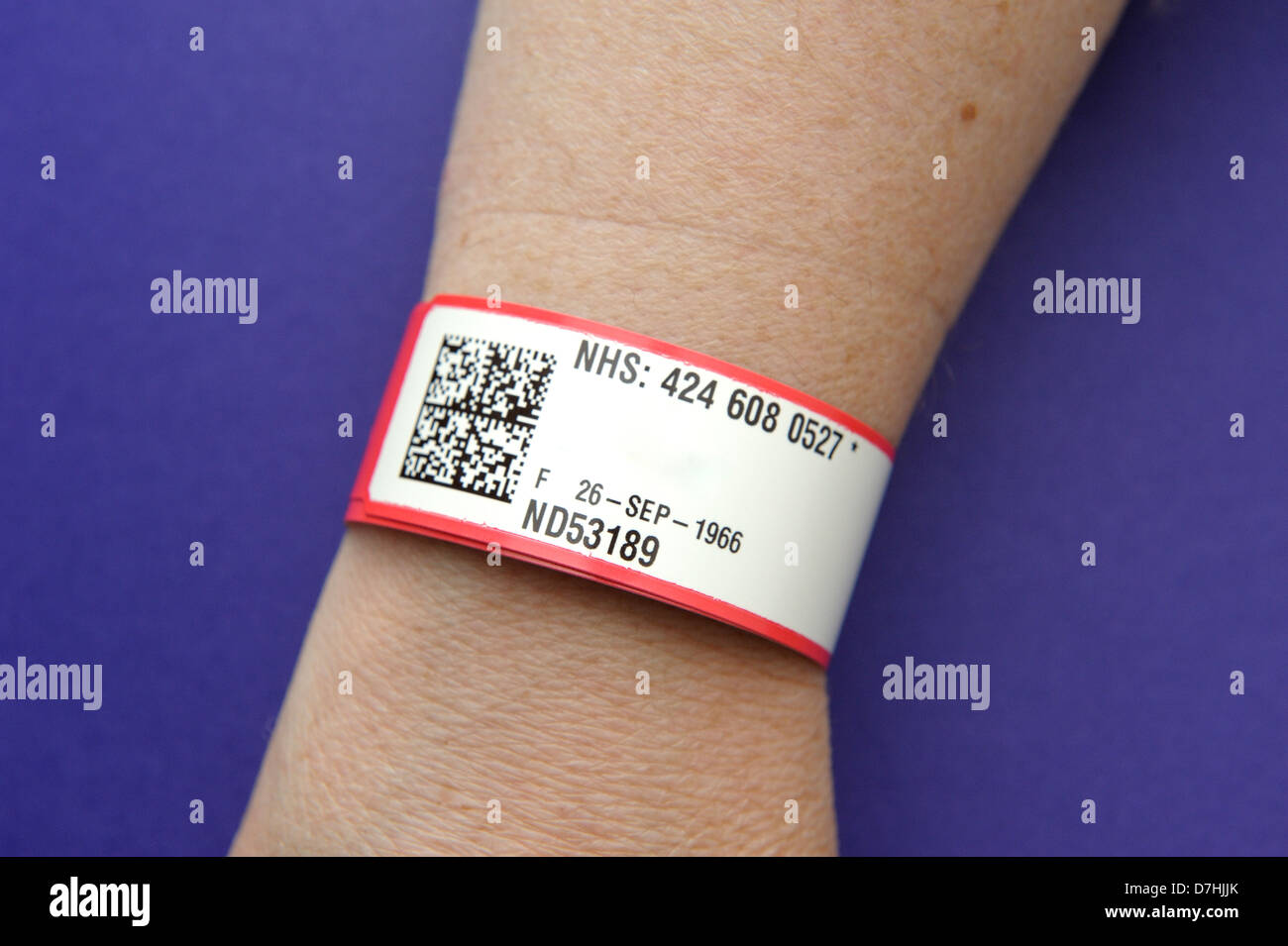Understanding the Innovative Developments Behind the Patient Identification Band
Wiki Article
Discovering the Different Kinds Of Patient Identification Band Used in Clinical Facilities
In the intricate globe of healthcare, the vital role of Patient Identification bands typically goes unnoticed. These bands, varying from straightforward paper wristbands to sophisticated RFID bands, create the backbone of Patient safety and security methods, guaranteeing precision in Patient Identification.Understanding the Value of Patient Identification Bands
While they might look like mere devices, Patient Identification bands play an important duty in medical facilities. These bands function as a crucial tool for validating Patient identity, stopping clinical mistakes related to misidentification. The bands normally present important info such as the Patient's name, age, blood kind, and any recognized allergic reactions. They permit medical care professionals to swiftly access this essential information, thereby helping with exact and timely clinical treatment. Patient Identification bands also aid in improving administrative tasks, making sure precise record-keeping and invoicing. In spite of their simpleness, these bands personify the concept of Patient security, a foundation of high quality health and wellness treatment. Without them, the danger of medical errors, and as a result, Patient harm, might significantly increase.Typical Paper Wristbands: Their Use and Limitations
Conventional paper wristbands have been a staple in Patient Identification across numerous clinical facilities. While their use is prevalent, they harbor certain constraints that may affect their effectiveness in Patient administration. This section will certainly concentrate on the range of their application and the inherent downsides related to their use.
Paper Wristbands: Use Range
In the realm of Patient Identification, paper wristbands have long held a vital role. These bands are usually made use of in outpatient settings, where the Patient's remain is short-lived. The wristbands have crucial information such as the Patient's name, date of birth, and a special Identification number. This easy, yet effective system, permits medical experts to quickly and accurately determine patients, ensuring the correct therapy is administered. Paper wristbands are also made use of in emergency situation situations, where quick Identification is extremely important. Their usage includes events like blood contribution drives and mass vaccination programs, further emphasizing their convenience. Despite advancements in modern technology, the humble paper wristband remains a economical and trustworthy service for Patient Identification in various medical care situations.Limitations of Paper Wristbands
Despite their extensive use, paper wristbands are not without their disadvantages. In addition, paper wristbands often do not have the technical capacities of even more modern-day options, such as barcoding or RFID chips, restricting their capability to simply showing written info. Paper wristbands can trigger pain or skin irritation to some people, specifically when used for extended durations.Barcoded Wristbands: Improvements in Patient Identification
While Patient Identification has actually long been a vital element of medical care, the advent of barcoded wristbands represents a significant leap onward. These bands take advantage of the simpleness of barcoding innovation, enabling Patient information to be rapidly scanned and accessed. They enhance the rate and accuracy of Patient Identification, reducing the threat of clinical errors associated to misidentification. Barcoded wristbands are affordable, very easy to generate, and remove handwriting errors typical with hand-operated systems. They are not without restrictions. While they use enhancements over conventional bands, the barcode can come to be smudged or worn, making it unreadable. In spite of this, barcoded wristbands remain a necessary device in contemporary medical care setups, representing the intersection of innovation and Patient care.Superhigh Frequency Identification (RFID) Bands: an Action In The Direction Of Futuristic Healthcare
The evolution of Patient Identification bands has caused the emergence of Radio Frequency Identification (RFID) Bands (patient identification band). These innovative devices present crucial benefits for medical care facilities, providing a much more reliable and technologically advanced methods of Patient Identification. The implementation of RFID in healthcare is a substantial action towards a more futuristic approach to Patient administration and safetyRecognizing RFID Bands

RFID Bands: Trick Benefits
Primarily, these bands boost Patient safety by providing exact, instantaneous Identification, published here consequently decreasing medical errors. RFID bands can store a large quantity of Patient data, including medical background and allergic reactions, enabling individualized treatment. On the whole, RFID bands represent a substantial advancement in Patient Identification modern technology, benefiting both people and health care companies.
Applying RFID in Health Care
As we step right into a technically innovative period, the execution of RFID bands in healthcare ends up being significantly essential. These bands provide a seamless way to track and determine clients, ensuring their safety and enhancing efficiency in therapy procedures. RFID bands supply countless advantages over typical Identification approaches. They can store a huge quantity of data, including the Patient's clinical history basics and treatment plans, which can be easily accessed by medical care companies. This information assists doctors make informed decisions concerning the Patient's therapy strategy. RFID bands lower medical mistakes by giving accurate Patient Identification, which is vital in avoiding misdiagnosis or incorrect medication administration. Therefore, the execution of RFID bands is a significant step in the direction of improving Patient security and healthcare delivery.
Color-Coded Wristbands: Aiding in Quick and Accurate Diagnosis
In the dynamic atmosphere of a clinical center, color-coded wristbands have emerged as crucial devices for swift and accurate Identification of a patient's medical problem. These wristbands, put on by clients, lug specific colors that match to various medical conditions or conditions. This system is made to provide instant visual cues to health care service providers, improving Patient safety and care quality.Methods for Reliable Implementation and Management of Patient ID Bands
Accomplishing ideal use Patient Identification bands necessitates a well-structured method for their execution and monitoring. The primary step involves training all health personnel on the significance of properly using and reviewing these bands. Hospitals need to systematize the use of ID bands throughout all departments, making sure uniformity and decreasing inconsistencies. Regular audits ought to be conducted to confirm adherence to policies and to visit the website rectify any inconsistencies. Patient education and learning is likewise vital; individuals need to comprehend the purpose of the bands and the demand for their consistent wear. patient identification band. It's essential to have a back-up plan in place, such as barcode scanning or biometrics, to make sure that Patient Identification is never compromised.
Verdict
Patient Identification bands are critical in medical facilities to make certain safety and accuracy. Efficient application and monitoring of these bands can significantly decrease medical errors, improve performance, and boost total Patient care.These bands, varying from easy paper wristbands to sophisticated RFID bands, develop the foundation of Patient safety procedures, making sure accuracy in Patient Identification.The advancement of Patient Identification bands has actually brought concerning the appearance of Radio Regularity Identification (RFID) Bands. On the whole, RFID bands represent a considerable improvement in Patient Identification innovation, benefiting both clients and health care companies.
RFID bands minimize clinical errors by offering accurate Patient Identification, which is important in stopping misdiagnosis or wrong medication administration. Patient education and learning is additionally vital; individuals need to comprehend the function of the bands and the need for their constant wear.
Report this wiki page